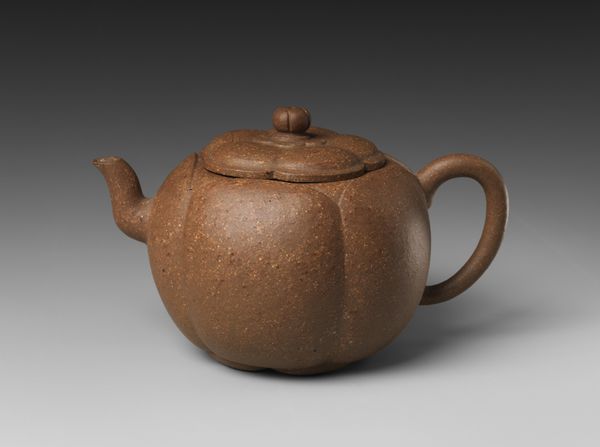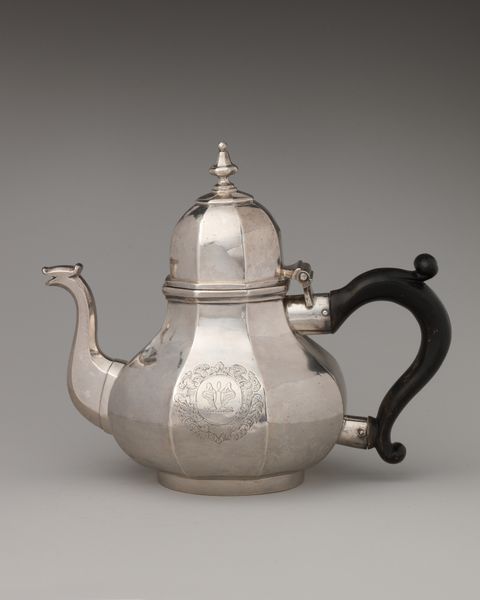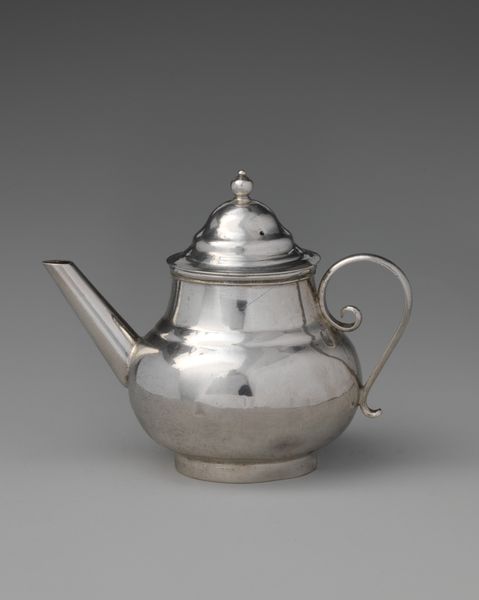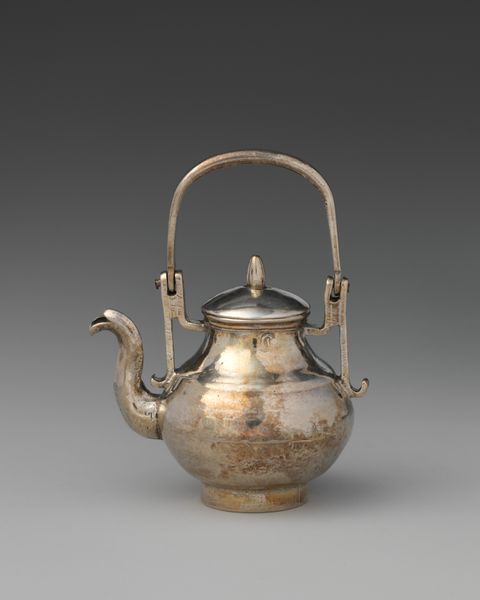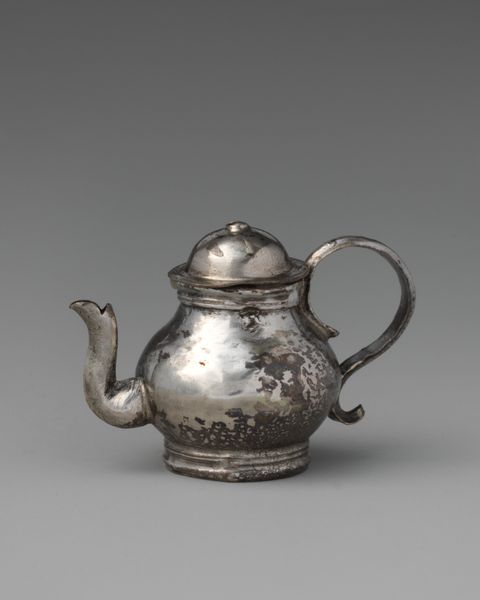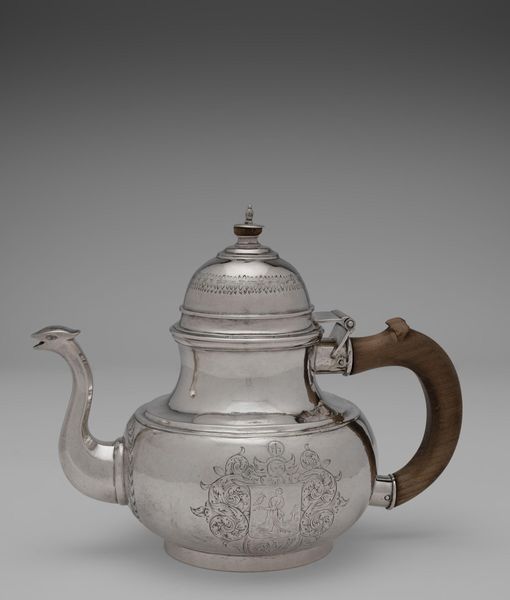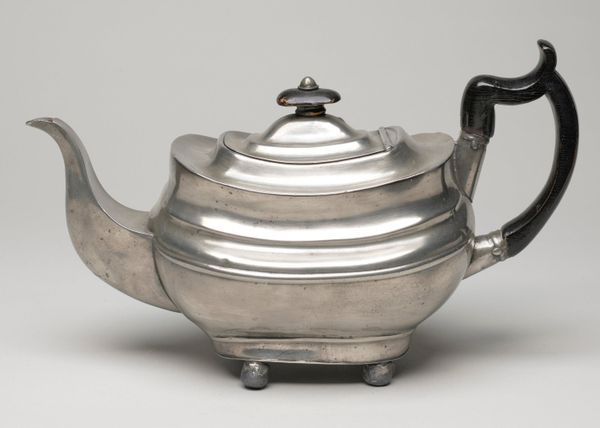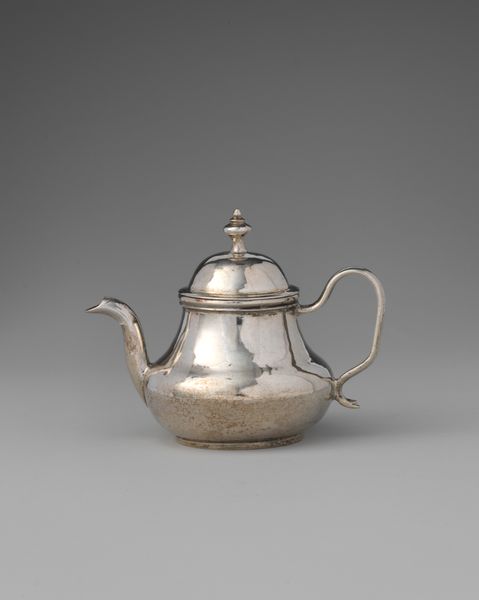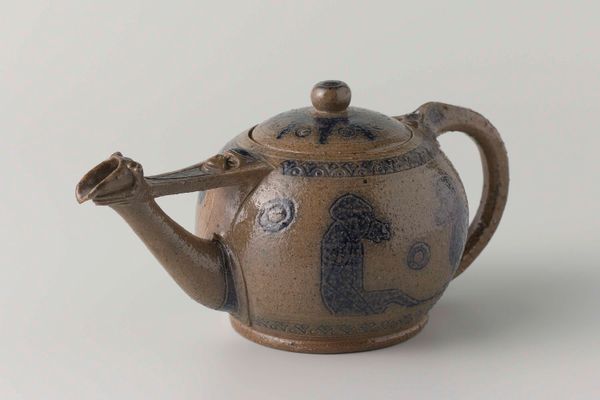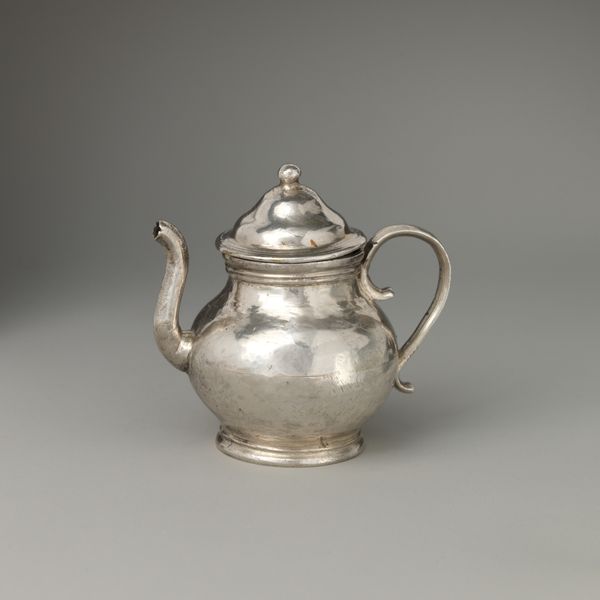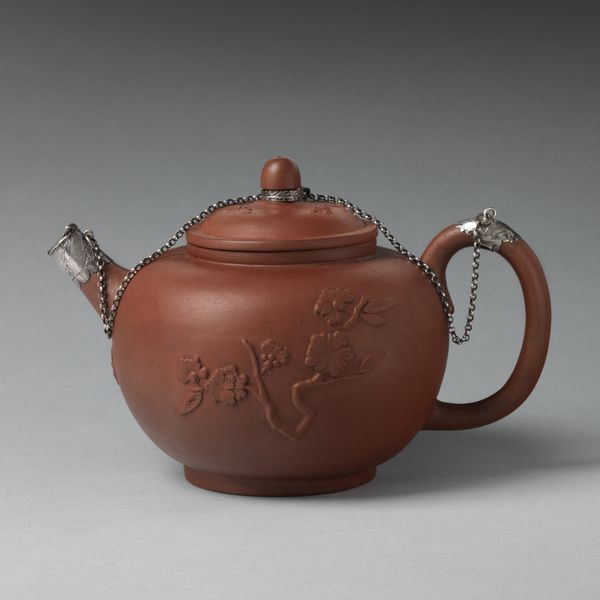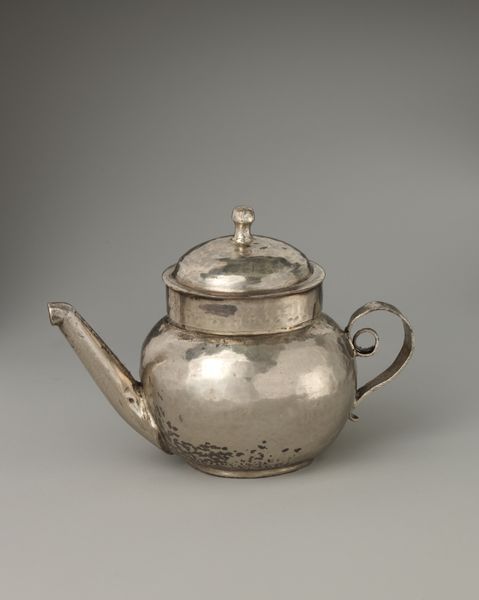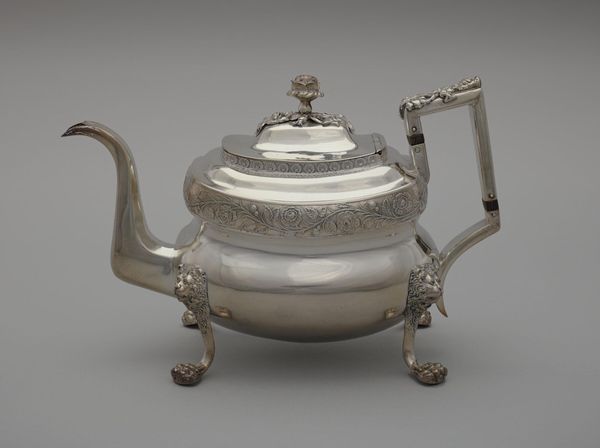
metal, sculpture
#
metal
#
sculpture
#
ceramic
#
decorative-art
Dimensions: Overall: 5 × 9 7/8 × 5 1/2 in. (12.7 × 25.1 × 14 cm)
Copyright: Public Domain
Editor: Here we have a "Teapot" by James Dixon & Sons, crafted sometime between 1837 and 1856. It’s currently housed at the Metropolitan Museum of Art. It appears to be made primarily of metal. The thing that strikes me most is the... texture, almost hammered-looking. What stands out to you about this piece? Curator: Immediately, I think about the process of its making. The choice of metal signals a particular investment in durability and perhaps accessibility, depending on the specific metal used. Is it silver, pewter, or something else? Each option reflects a different economic reality for both the producer and the consumer. The visible "hammered" texture – think about the labor involved. Is that texture decorative or functional? Editor: Functional? How so? Curator: Well, it could have been implemented to increase surface area. I mean, what resources and skill were required? We must think, how did its manufacture contribute to the division of labor during the industrial revolution? Think of it as more than mere domestic-ware. Consider also what this object represents to people now – would you consider owning one? Editor: Probably not. It's interesting to think of it as less about decoration and more about production, and even economics of tea consumption in that era. Curator: Precisely! By examining the materials and processes, we move beyond mere aesthetic appreciation and tap into the social and economic contexts that shaped its creation and use. Editor: I didn't think I could find a teapot so fascinating, but thinking about the material processes makes me see this artwork under a whole new light. Thanks! Curator: My pleasure, the material tells a very powerful story!
Comments
No comments
Be the first to comment and join the conversation on the ultimate creative platform.
